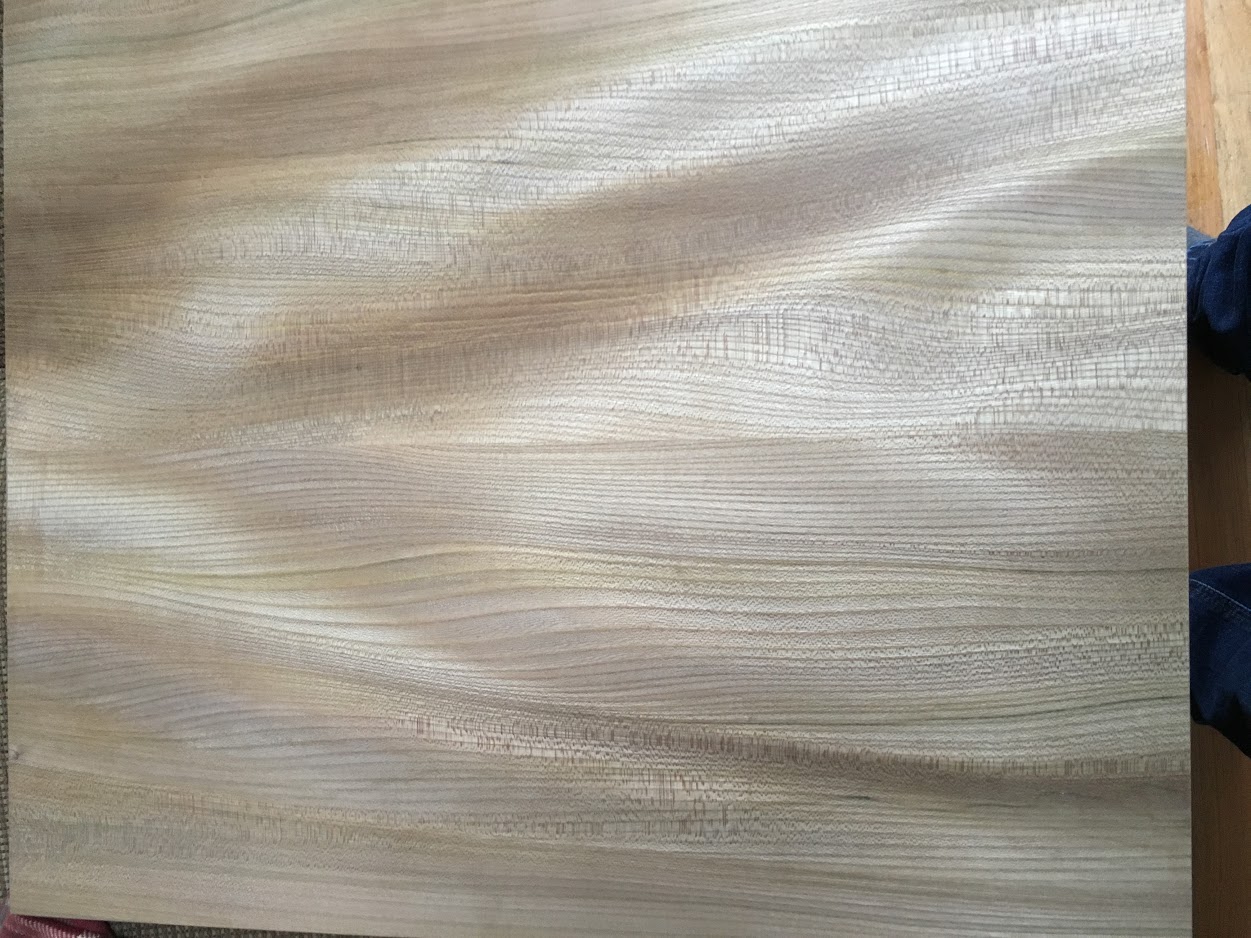How something like this is done from a pragmatists point of view:
* you learn to set the cap iron at a certain distance where you know it's reliable. When you're smoothing and preparing the final surface, you do that once and then you do the following two steps:
1) you set the plane to take a relatively heavy shaving until the bulk of tearout or damage is removed (relatively - i measured this for the first time this week due to a discussion on another board - anyway, relatively heavy seems to me to be about 3 thousandths in something like oak or beech. It doesn't sound like much, but it's a big gain in time to be able to do it at speed without concern of creating any damage. Maybe it's 4 in something like cherry)
2) you back the cut off for a final pass or two (without adjusting the cap iron) and take a thin shaving pass or two to get the surface as nice as possible
You can set the cap closer and closer, but if it was set properly for the first step, anything that defies in step 1 probably won't improve that much if you set the cap closer. The problem at that point isn't the chip lifting, it's the quality of the shearing that's occurring, and that quality will be lowest when the grain is directly in line with the iron itself (e.g., running out to the surface at 45 degrees in a stanley plane).
This talk is complicated, the process is simple. If it takes less time to mash around the surface a bunch and then use a scraper a bunch, too, then something is wrong.
There is one last quality comment I want to take (and I'm assuming that someone will take my suggestion on this at some point, maybe nobody will) - once in a great while, you'll run into a ribboned board where the early wood is so soft and crumbly that it doesn't want to be planed. I've had various lumber guys tell me that's because the wood wasn't dried properly, but it happens. You sand that wood. But there is a further concern with such boards - that surface will absolutely not be durable at all. Stick your fingernail into it, you'll see what I'm talking about. It will wear very unevenly. Sometimes that can be a nice characteristic and sometimes not.
Let's say you have a board and you absolutely have to scrape an area like that, then follow 1 and 2 above, and properly polish a card scraper and do the work with light strokes rather than heavy. Burnish with shavings after, and if you've done a good job, there shouldn't be contrast between planed and scraped surfaces (which is potentially problematic).
Anyway, this should be the *easiest*, and the "pragmatic" move of adding more steps should not be. This whole thing is far more complicated to talk about than do, but keep my suggestion above in mind (and keep an eye on the early wood for crushing or crumbling). My suggestion is one where you want to be - one that you can do the work quickly, without risk, and without additional steps (and also without stopping to take the plane apart and reset the cap. I almost never reset the cap iron. Maybe 3 times in 5 years?).
For five years+, I've used a cap iron a lot and never measured it, but found earlier this week (after using a microscope) that I'm setting around 6 thousandths. That's not important, and it's more intelligent to set the cap iron and notice the chip straightened probably at about half of the set (6 thou gap, 3 thou shaving in harder wood, perhaps 4 in something like cherry). Judge by the shaving and the surface rather than guessing at thousandths. You will get to a point where it "looks" right when you set the cap. I am absolutely sure that my "Standard set" does not differ by more than a thousandth each time. I'd hate to take my iron to the scope to take a set of pictures to confirm that, but I'm sure it's true. How do I know? I could see that I'd set my cap just askew (slightly further at the left than right) when I measured last week. It's not something I'd correct in normal work. The cap set was one thousandth different or so by microscope measurement from one edge to another, and I could see it. That was a response to a different question, but it was interesting to quantify.
If it seems complicated, focus on finding the cap set that needs no measurement and allows you to follow the two steps above except for the most contrary and rare of woods.


































